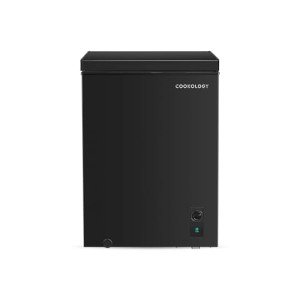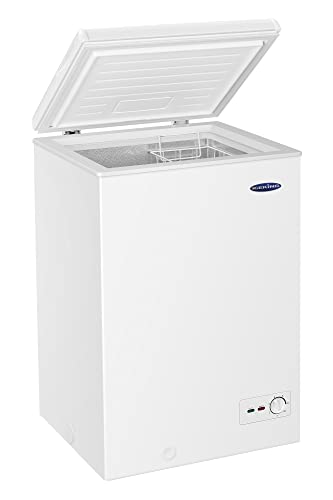In recent years, energy efficiency has become a top priority for households looking to reduce their carbon footprint and cut down on utility bills. One appliance that often gets overlooked in discussions about energy consumption is the chest freezer. The Beko White Chest Freezer emerges as a star in this category, providing homeowners with ample storage capabilities while also emphasizing energy efficiency. This guide will delve into the features, benefits, and energy efficiency of the Beko White Chest Freezer, supported by tables and helpful FAQs.
Key Features of the Beko White Chest Freezer
Before diving into energy efficiency, it's important to understand what sets the Beko White Chest Freezer apart from its competitors. Here are some key features:
| Feature | Description |
|---|---|
| Capacity | Available in sizes ranging from 100L to 250L |
| Energy Rating | A++ or A+++ for energy efficiency |
| Temperature Control | Adjustable thermostat for optimal cooling |
| Design | Sleek and modern white finish, suitable for any space |
| Storage Baskets | Removable baskets for organized storage |
| Exterior Dimensions | Various sizes to fit different spaces |
| Fast Freeze Function | Quick freezing of newly added items |
| Noise Level | Operates quietly; usually around 42 dB |
The Importance of Energy Efficiency
Investing in energy-efficient appliances is essential for several reasons:
- Cost Savings: Energy-efficient appliances consume less electricity, directly impacting monthly utility bills.
- Environmental Impact: Lower energy consumption reduces greenhouse gas emissions, making it beneficial for the environment.
- Longevity: Energy-efficient models often come with updated technology that can enhance durability.
- Government Incentives: Many countries offer tax credits or rebates for energy-efficient appliances, reducing the overall price for consumers.
The Beko White Chest Freezer checks all these boxes, making it a practical choice for eco-conscious consumers.
Energy Efficiency Ratings Explained
To better understand the energy efficiency of the Beko White Chest Freezer, it is helpful to know how energy ratings work. Devices are rated on a scale from A to G, where A is the most efficient and G is the least. The Beko White Chest Freezer typically receives an A++ or A+++ rating.
| Energy Rating | Annual Energy Consumption (kWh) | Estimated Annual Cost (£) |
|---|---|---|
| A+++ | 150 to 180 | £20 to £30 |
| A++ | 180 to 230 | £30 to £40 |
| A | 230 to 300 | £40 to £50 |
| B | 300 to 400 | £50 to £70 |
Specific Advantages of the Beko White Chest Freezer
-
Advanced Cooling Technology: Beko's innovative cooling system ensures consistent temperatures are maintained, meaning users can store food for a longer duration without worrying about spoilage.
-
Quick Freeze Functionality: This function rapidly lowers the temperature when new items are added, ensuring that food retains its nutritional value and freshness.
-
Space-Saving Design: The Beko White Chest Freezer is designed to maximize storage space while fitting comfortably in various locations around the home.
-
Quiet Operation: With a noise level of around 42 dB, this model operates quietly, making it suitable for homes where noise levels should be kept low.
-
Easy Cleaning and Maintenance: The removable storage baskets and smooth surfaces facilitate easy cleaning.
-
Versatile Temperature Control: The adjustable thermostat allows users to determine the best temperature for their stored items, promoting even greater energy efficiency.
Frequently Asked Questions (FAQ)
1. What size Beko White Chest Freezer should I choose?
The size largely depends on your storage needs and available space. Smaller models (around 100L) are ideal for small households or limited spaces, while larger models (up to 250L) can accommodate bigger families or bulk purchases.
2. How energy-efficient is the Beko White Chest Freezer compared to upright freezers?
Chest freezers, including the Beko White model, are generally more energy-efficient than upright freezers. They maintain their temperatures better and require less energy for operation, making them an excellent choice for preserving food sustainably.
3. Can the chest freezer operate in colder temperatures, like a garage?
Yes, the Beko White Chest Freezer is designed to operate efficiently in various environments, including garages. However, it is advisable to check the manufacturer's specifications for the temperature range it supports.
4. How much can I save on energy bills with this chest freezer?
Annual savings can vary based on local energy costs and individual usage patterns. However, typical energy costs for an A+++ rated model range from £20 to £30 annually, which is significantly lower than less efficient models.
5. Do I need to defrost the Beko chest freezer regularly?
While the Beko White Chest Freezer is designed to minimize frost build-up, it is still recommended to defrost it every six months or when frost accumulates more than 1/4 inch to maintain its efficiency.
The Beko White Chest Freezer is not just another freezer; it's a pragmatic solution for households looking to achieve energy efficiency without sacrificing storage capacity or performance. With its high energy ratings and modern features, it stands out as a leader in energy-saving technologies. By investing in a Beko White Chest Freezer, consumers can take a step toward a more sustainable lifestyle while enjoying the benefits of lower energy bills and higher food preservation quality.
Overall, the combination of advanced technology, favorable energy ratings, and user-friendly features makes the Beko White Chest Freezer a wise choice for anyone in the market for a new freezer. Whether you are stocking up for family meals or need extra space for food storage, this chest freezer is poised to meet diverse needs while remaining eco-conscious.







